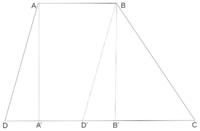eternenyi23
New member
- Joined
- Apr 13, 2020
- Messages
- 10
So I have a trapezoid problem and I forgot how to find the missing leg, I have no angles only the height, the bases, and one side. I know I should be able to figure this out, but I forgot how to do it. I would like some help with this, thank you.


